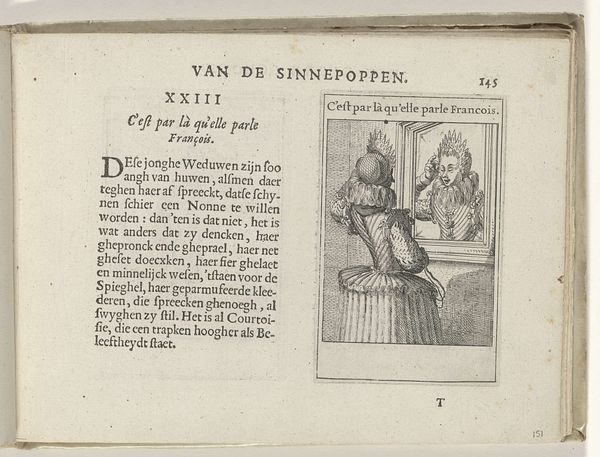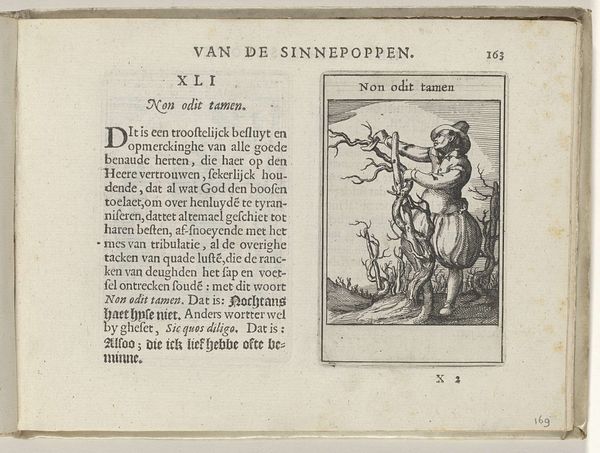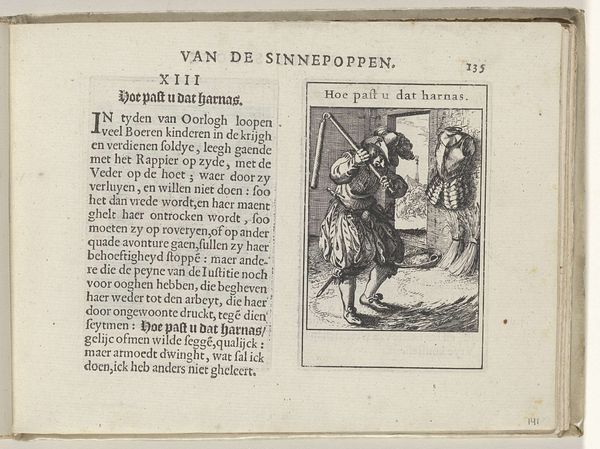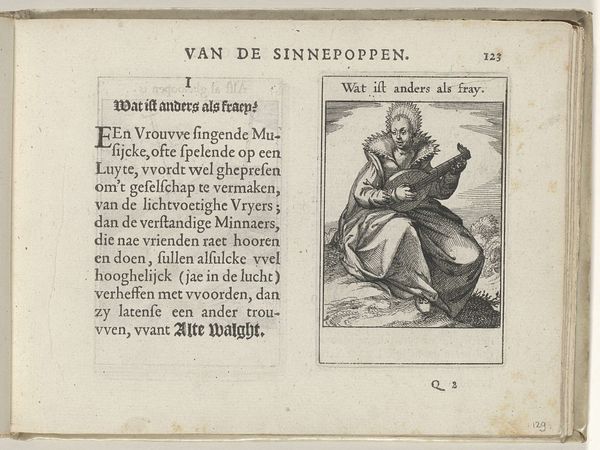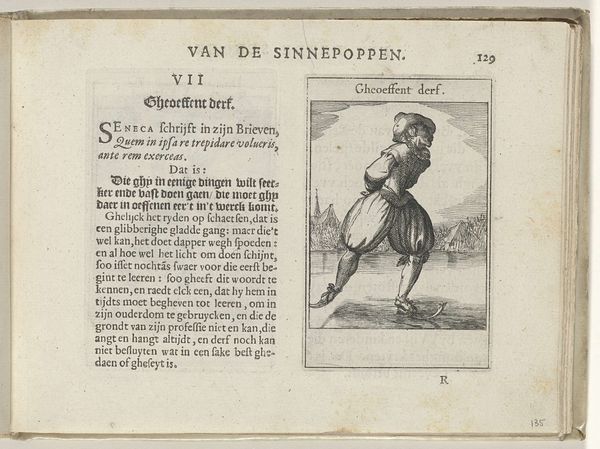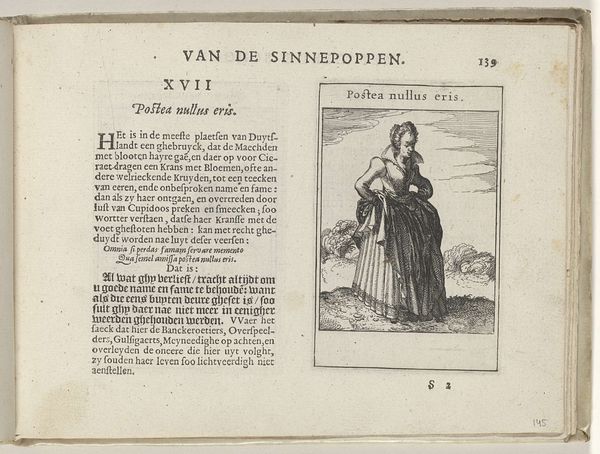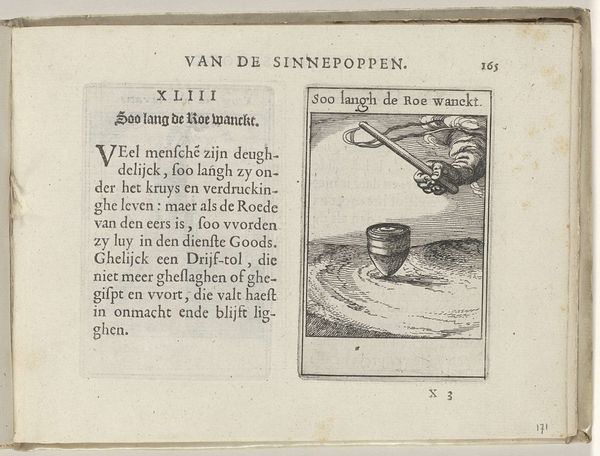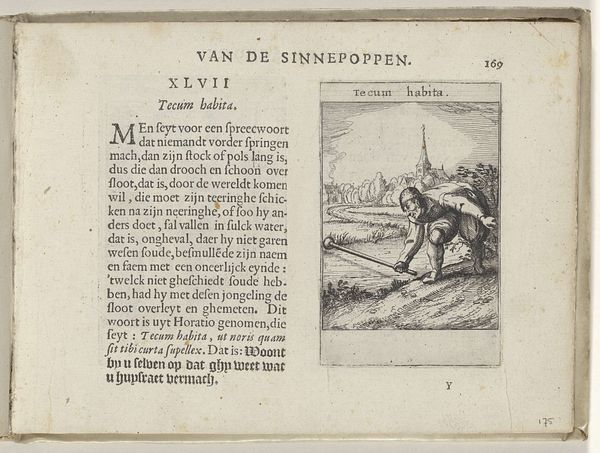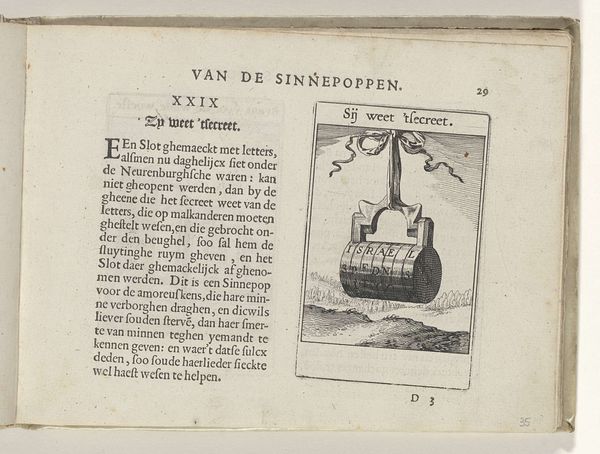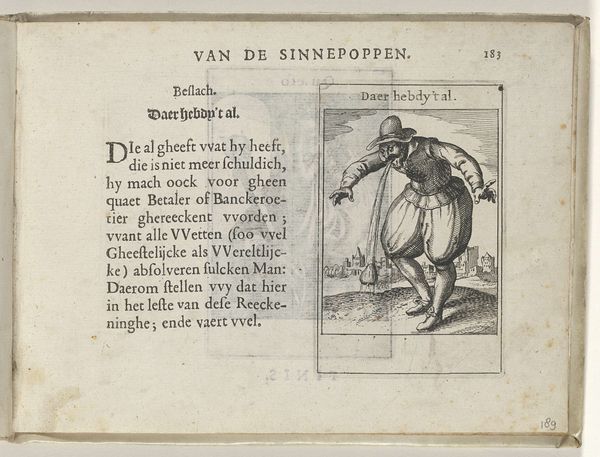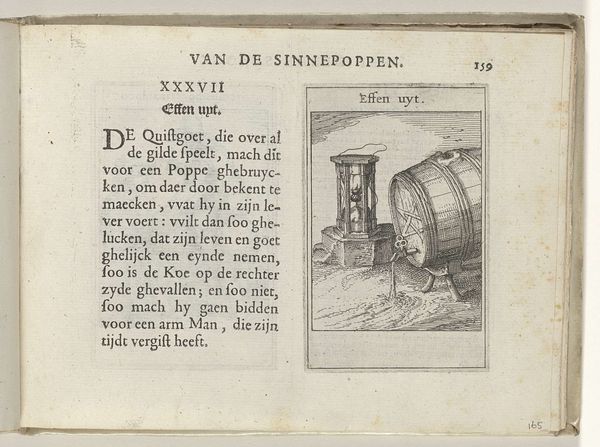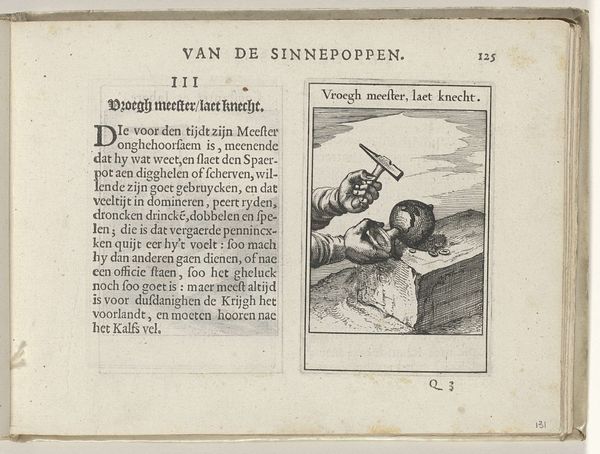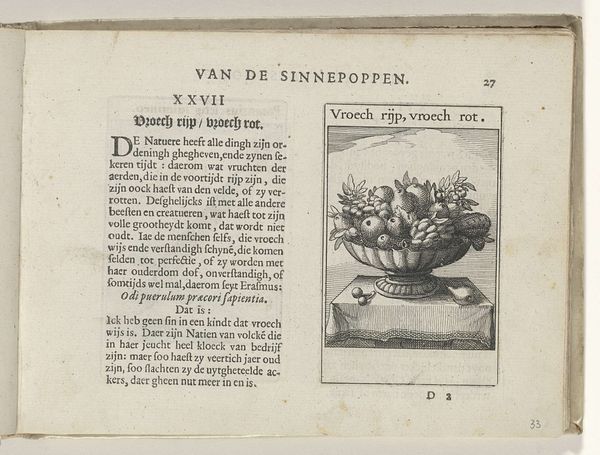
print, engraving
#
medieval
#
narrative-art
#
dutch-golden-age
# print
#
old engraving style
#
genre-painting
#
engraving
Dimensions: height 137 mm, width 188 mm, height 95 mm, width 60 mm
Copyright: Rijks Museum: Open Domain
Curator: Welcome to the Rijksmuseum. Before us, we have a 1614 engraving by Roemer Visscher entitled, "IX In de rommelingh ist vet". Editor: My immediate impression is the sheer physicality of labor. Look at the determined bend of her back and arms as she churns; you can almost feel the repetitive strain. Curator: Indeed, Visscher’s choice of medium, printmaking, connects to the social context of mass production, suggesting widespread engagement in such dairy production at the time in Dutch society. Editor: Note also the composition itself: The lines of the barrel create a rigid vertical axis, anchoring the figure. The lighting and shadows define the shapes; every line has the purpose of suggesting solidity. It's structured yet dynamic. Curator: I see this piece also as an expression of 17th-century values regarding labour. Beyond just making butter, the engraving is on a page accompanied by text stressing the necessity of diligent labour in attaining wealth. It reflects the mercantile values underpinning Dutch society. Editor: Perhaps, but I'm drawn more to the artist's effective manipulation of line and texture. How the artist made effective use of dark and light creates dimension in what are essentially just marks on a page. The barrel and churn appear practically three-dimensional. Curator: Agreed, there’s skill in its execution. Yet it speaks, doesn't it, to the cultural preoccupation with trade, labor, and perhaps the emergence of a consumer society? It challenges romantic notions of "high art." Editor: While you find social narratives, I find visual excellence. Even this genre-painting provides an intricate interplay of form, light, and texture that allows it to express visual excellence, and stand apart from any kind of craft. Curator: It is thought-provoking to view daily labor immortalized in this piece, both visually and through accompanying narrative. It is a tangible symbol of an early-modern, increasingly mercantile world, churned from a pastoral scene. Editor: Yes, whether through process or presentation, the way the figure embodies the churn seems less crucial than how effectively it captures its visual identity; the artist makes the common place worth pondering.
Comments
No comments
Be the first to comment and join the conversation on the ultimate creative platform.
